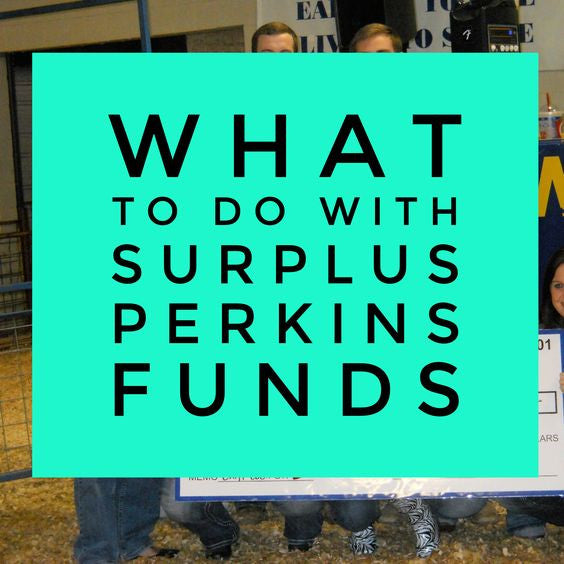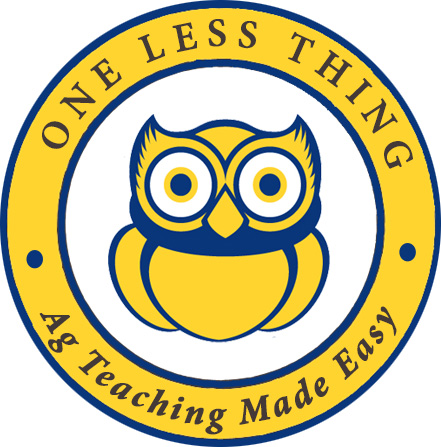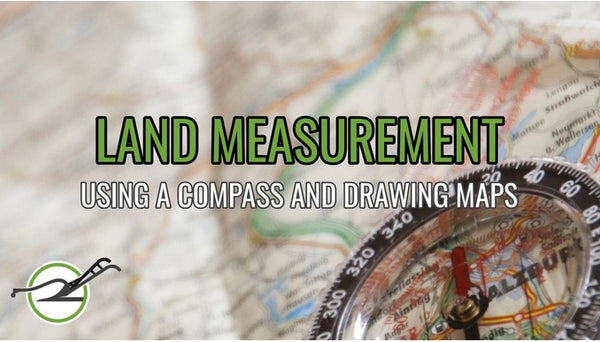What to do with Surplus Perkins Funds

If you laughed when you read the title, then you're right there with me. That's not a problem I encountered very often, but from time to time I hear of Ag teachers that get a random call from their CTAE director who explains they have $3,000 and they need to spend it by Friday. Then the brain on the Ag teacher immediately freezes up and they can't think of a thing they need that isn't a consumable. My first thought is, you should go to www.OneLessThing.net and do a little shopping (shameless ploy). But you'll see below I advise against impulse buys and throwing money at stuff just to spend money.
So let's get to it. 3D printers and drones are wonderful technology and they both can do amazing things that your kids will love. Then it sits on the shelf for the rest of the year. That's money sitting on a shelf collecting dust. Unless, your program is centered around precision farming or is CAD based Ag Mechanics program. If so, get your drone on or build one with a 3D printer.
I've read suggestions that you should stock up on lab glassware and scientific instruments. Great idea! But wait, does the science department have all that stuff? If so, don't buy it again, just borrow their stuff but please ask nicely. Don't buy what you can borrow. Focus on items that you'll use with multiple classes throughout the year.
What is your shortcoming in Ag education: Hydroponics, vet science, horticulture, or another subject? Are there teaching materials that will help you get over the hump in those classes? No AI dummies or gold plated water breakers but solid equipment you'll use everyday. For your greenhouse a fertilizer injector, heating mats for seed germination, pressure washer or a shade cloth. For hydroponics a series of small fish tanks for hydroponic trials (think a group per tank for a study with multiple variables) or a hydroponic kit that gets you and your class started. Vet science could be small animal crates, harnesses, and an examination table. Don't overthink the room. Teaching students artificial insemination is a great activity but if they don't have practice with using harnesses, understanding animal behavior, and the basics of animal care then a high level AI lesson has a huge neat factor but very low real life application.
Students develop the skills you teach in class through application. If you have a realistic kennel similar to a vet office that your students must periodically use to crate and uncrate animals correctly, clean, and sanitize then they are learning by doing and not just learning by listening. Trial and error, making mistakes, and learning from each time they use the kennel is an education they can not get from a lecture. The same goes for horticulture and hydroponics. Find a way to turn the class into a long term set of group research projects. If you don't have a greenhouse then there are smaller, consumer sized ones that will work. Each group gets a series of plants, seeds, or cuttings with a recipe (amount of sunlight, water, fertilizer,...) and let's see what happens. Pot them up and see what happens. If it is a colossal failure, then you'll have a great story to tell, but regardless the kids will learn from the failure and the success.
Take a deep breath and figure out how that Perkins money can make your life easier, especially when it comes to applying lecture content in an activity. The results will pay dividends for years to come. Good luck with this and please let us know your thoughts. Please follow us on Facebook, Pinterest, and Twitter. Send us your Facebook, Twitter, and Pinterest handles and we'll be glad to follow as well. You can also contact me at brian@onelessthing.net



